Kenzan's Snow and Pine Tree Sake Cup by Miyagawa Kosai
Kenzan's Snow and Pine Tree Sake Cup by Miyagawa Kosai
Couldn't load pickup availability
Height: 7.5cm Width: 6.5cm
The "Kenzan Copy Snow Pine Picture Sake Cup" is a masterpiece of Kyoto ware created by the Miyagawa Kosai family, and is a luxurious sake cup made using the traditional techniques of Kenzan copying. It depicts a towering pine tree in a snowy landscape, and the contrast between the white snow and the green of the pine tree beautifully expresses the harshness of winter and the beauty of nature. This sake cup is a work that combines a size that fits comfortably in the hand and practicality, and the beautiful design jumps out at you every time you pour sake. It can be said to be a special vessel that will make your time enjoying sake even more elegant and enriching.
Symbolism of snow and pine trees
The "pine" and "snow" depicted on the sake cup are not just landscape depictions, but also have deep symbolism. As an evergreen tree, the pine tree remains lush and green all year round, and has been a symbol of eternal youth, longevity and prosperity in Japan since ancient times. Meanwhile, snow represents newness and purity, suggesting the strength of nature in the silence of winter. By combining these two elements, the meaning embedded in the vessel is felt even more deeply. The contrast of the snow piled up on the lush pine branches expresses both the delicate beauty and strength of the natural world, and conveys the Japanese love of the four seasons.
With pine trees and snow painted like this, the "Kenzan Copy Snow and Pine Tree Sake Cup" instantly evokes the coolness and freshness of a winter morning. Anyone who holds the cup will be able to enjoy the seasonal feeling every time they drink sake. In Japanese culture, the pine tree is also known as a symbol of auspiciousness, and is a highly valued motif especially at New Year's and celebratory occasions. This piece was also created with such auspicious meanings in mind, and is said to bring good fortune to the user.
The difference between sake cups and sake cups and their roles at a drinking party
Both sake cups, guinomi and ochoko, are sake vessels used for drinking sake, but there are subtle differences in their shapes and uses. Ochoko are relatively small and lightweight, and are often used to drink sake in one or two sips. On the other hand, guinomi are somewhat larger and deeper, and are characterized by a solid feel that fits comfortably in the hand. The "Kenzan Copy Yukimatsu no E Sake Cup" has a typical guinomi shape, and is easy to hold, and you can enjoy your sake while slowly admiring the intricate design painted on the vessel. Sake cups are particularly light to the touch, and the movement when drinking sake is smooth and comfortable. At drinking parties, their elegant designs become a topic of conversation, and it is easy to imagine a scene where Japanese traditions and aesthetics are discussed through the vessel. Sake vessels are not just tools for drinking, but their shape, design, and even the feeling of touching them are important elements in enjoying sake.
The Technique and Significance of Kenzan's Copying
"Kenzan copies" refers to a group of works that inherit and reinterpret the unique Kyoto ware techniques created by the Edo period master craftsman Ogata Kenzan. Kenzan learned from Nonomura Ninsei, the founder of Kyoto ware, and is known for his style that combines sophisticated techniques with free and bold designs. Kenzan's works are characterized by their streamlined simplicity and skillful use of color, and his style continues to influence many potters to this day. He is also known for his collaborative works with his brother Ogata Korin, and his works incorporate the flamboyance and free expression of the Rinpa school into Kyoto ware, and are loved throughout the ages.
This influence is also strongly reflected in "Kenzan Copy of Snow Pine Wine Cup," which copies Kenzan's style while adding a new interpretation unique to Miyagawa Kosai. The word "copy" does not mean simply imitating, but rather incorporating past techniques to create something new, and Kenzan's copy truly embodies this spirit. Kenzan's techniques have been passed down through the generations even in modern times, and Miyagawa Kosai has inherited that tradition while pursuing his own unique beauty.
Traditional techniques of Makuzu ware and straw ash glaze
Among Kyoto ware, Makuzu ware is known for its rich variety of techniques and high level of skill, using a variety of techniques such as colored painting, blue and white porcelain, and gold painting, but one technique that stands out in particular is the glazing technique known as "straw ash glaze." This straw ash glaze has been used by the Miyagawa Kosai family for generations, adding to it over the years, and gives the entire vessel a soft, warm texture, bringing a plump elegance to its surface. Thanks to this technique, the "Kenzan Copy Snow Pine Picture Sake Cup" is not only beautiful in its design, but also exudes a strong presence in the feel when touched and the texture it appears on the surface.
Straw ash glaze was originally one of the techniques used by Nonomura Ninsei, the founder of Kyoto ware, and the Miyagawa family further developed the technique and has passed it down as an important element of Makuzu ware. The appeal of this glaze is that it takes on subtly different hues depending on the clay used. Even when the same glaze is used, depending on the quality of the clay, it can change to a warm reddish color or a cool pale blue, each creating a different atmosphere. This glaze is also used on the "Kenzan Copy Snow and Pine Picture Sake Cup," which exudes a unique softness and nobility.
The history of the Miyagawa family and Makuzu ware
The history of pottery in the Miyagawa family dates back to the early Edo period. The family's history began around 1684 when the first generation Miyagawa Kobee Masakazu began pottery in front of the Chion-in Temple in Kyoto. Since then, the family has continued to create pieces suited to the times, focusing on tools for the tea ceremony and sencha tea ceremony, and has evolved while preserving its traditions for over 330 years to this day.
In particular, Makuzu ware is an important technique in the Miyagawa family, and was named after the kiln they opened in Makuzugahara, Higashiyama, Kyoto. For generations, the Miyagawa family has pursued their own unique beauty while inheriting the traditions of Kyoto ware and incorporating new techniques. Miyagawa family works are not only highly regarded by enthusiasts of the tea ceremony and sencha tea ceremony, but in recent years they have also been highly praised by overseas collectors and museums.
Overseas evaluation and future prospects
The Miyagawa Kosai family's Makuzu ware has attracted many fans not only in Japan, but also overseas, including in the United States, the United Kingdom, France, and China. Their works are housed in renowned institutions such as the Victoria and Albert Museum (London) and the Permanent Mission of Japan to UNESCO (Paris), and their artistry has been highly praised internationally. The splendor and elegance of Makuzu ware, as well as its beauty supported by traditional Japanese techniques, are appreciated around the world.
The "Kenzan copy of Snow and Pine Trees Sake Cup" is one such Miyagawa family work, and its delicate design and precise craftsmanship will continue to be widely loved both in Japan and abroad. While inheriting a long tradition, the Miyagawa Kosai family continues to produce works that respond to modern sensibilities, and new developments are expected for the future.
Share

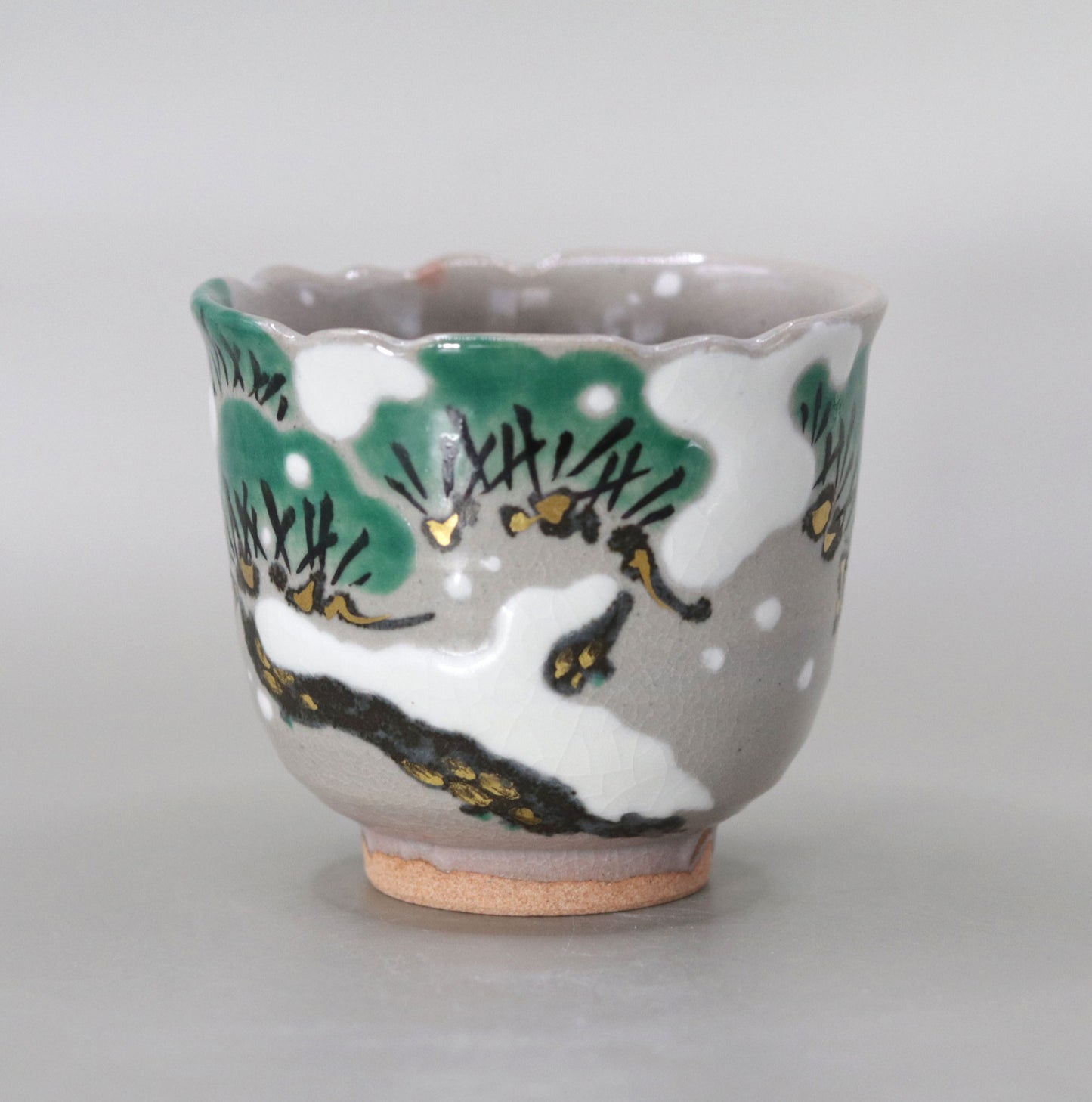
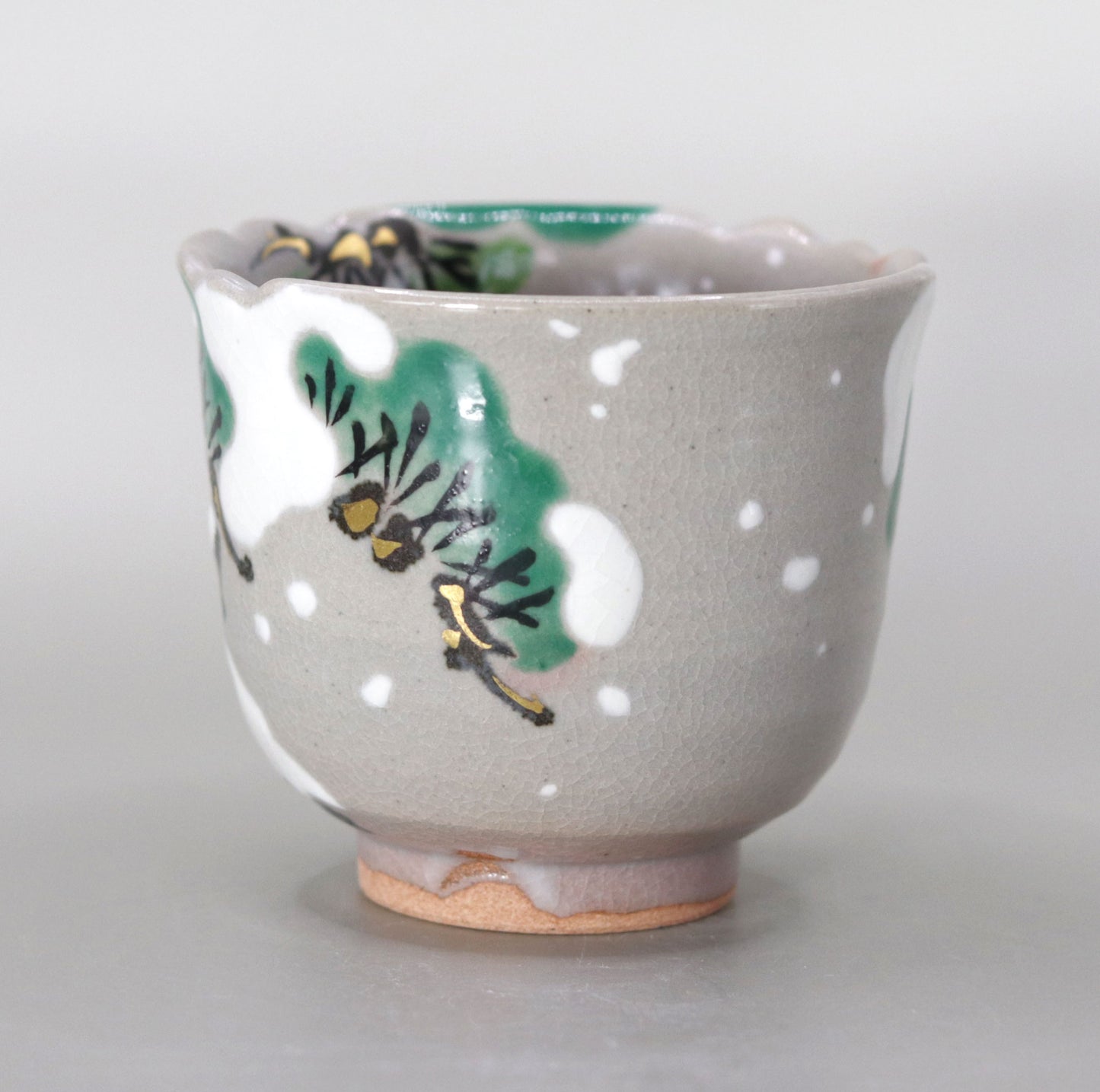

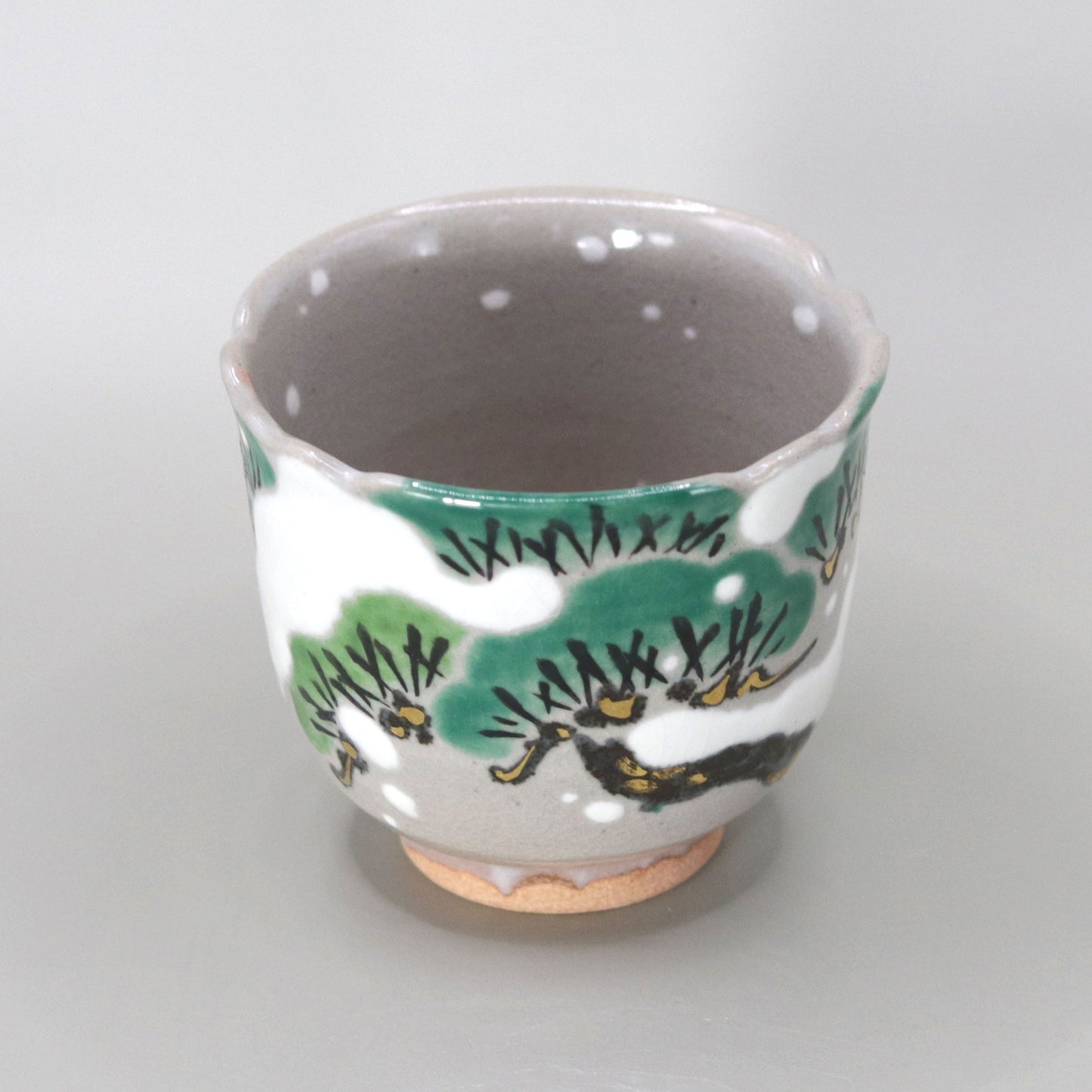
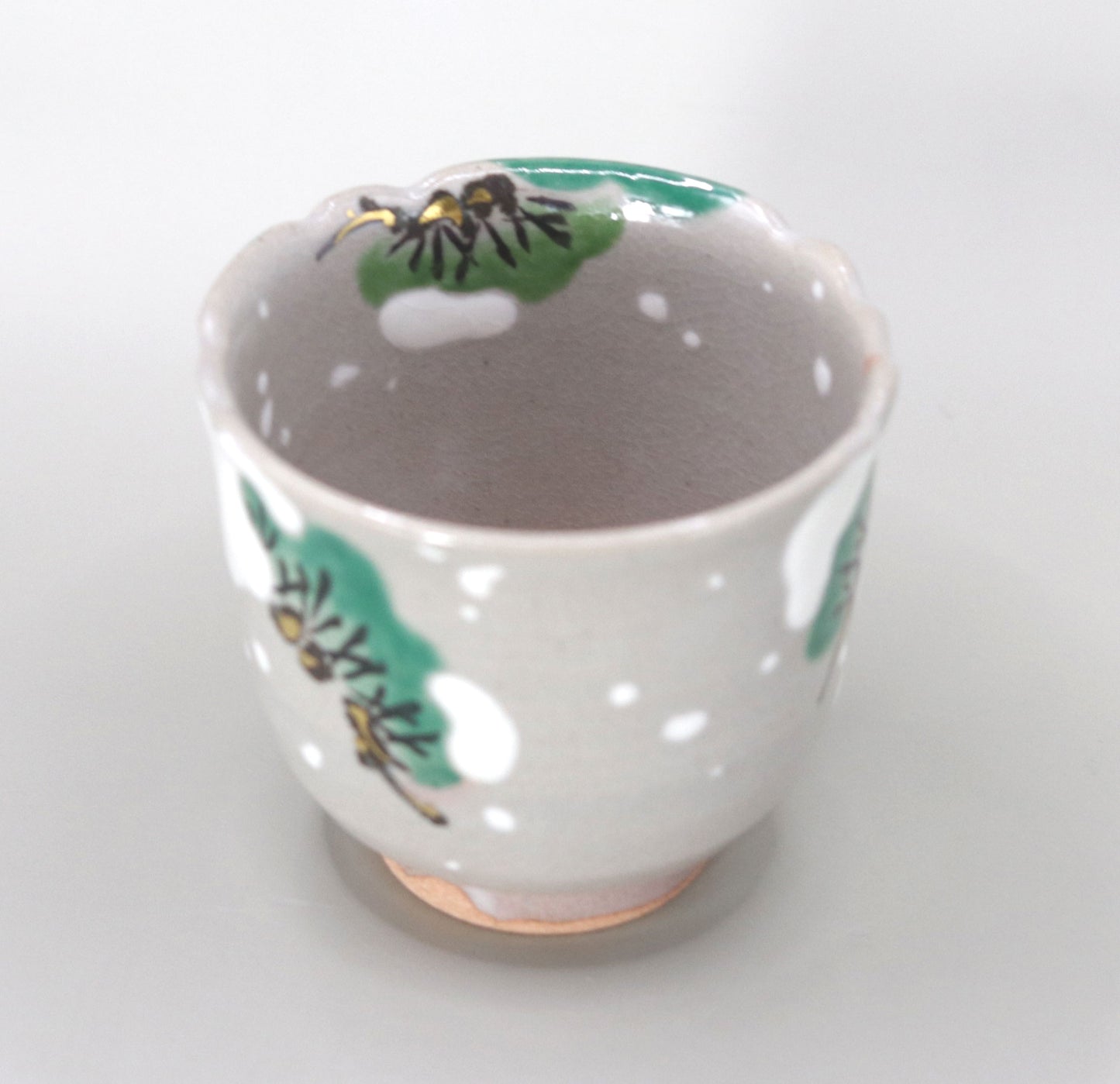
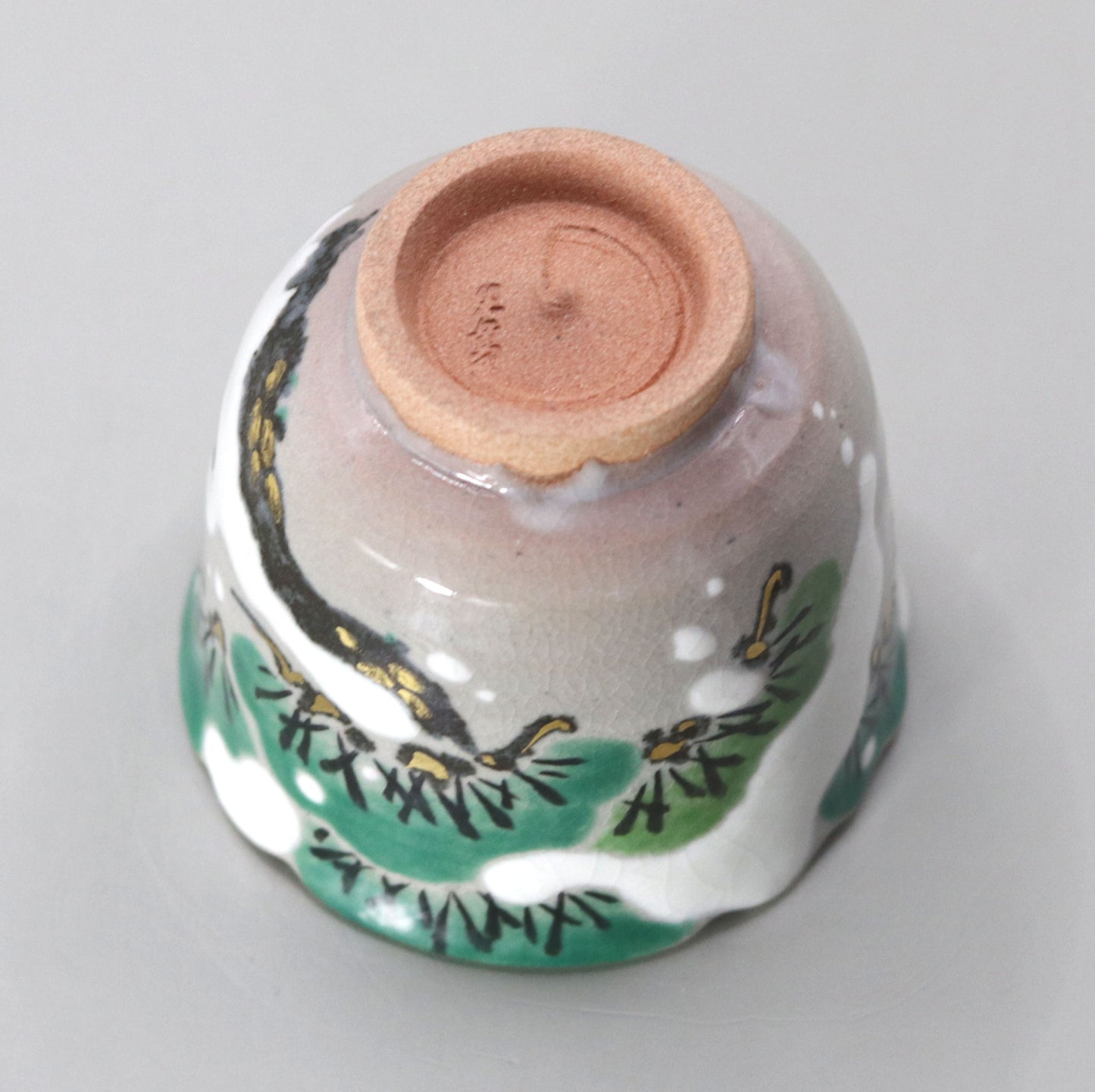

Multi-Column
-
[I will send it to you quickly and carefully]
We carefully package each product in a way that suits it best.
Also, delivery times vary depending on the piece (vessel, etc.).
Items that already come with a box will be shipped within 1-3 days of the order date.
For items that require a box to be made after your order, it will take approximately 30 days for production to be completed and then shipped.
In either case, once we have confirmed your order, we will contact you by email to inform you of the delivery date.
-
[Requests when purchasing pottery]
Even products that look the same may differ slightly in color, shape, size, etc.
The way the glaze is used, the power of the kiln, the firing method, the season, and the humidity also affect the appearance of the pottery.
Please understand the individuality of each piece of pottery and enjoy the unique warmth of handmade.








